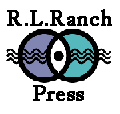Book Review -- The Homoeopath -- Francis Treuherz
This book review is reprinted from No. 92, Winter 2004 edition of
The Homoeopath
with permission from Nick Churchill of The Society of Homoeopaths.
11 Brookfield, Duncan Close, Moulton Park, Northampton NN3 6WL, United Kingdom.
Impossible Cure: The Promise of Homeopathy
by Amy Lansky
RL Ranch Press: Portola Valley, CA, 2003.
Reviewed by Francis Treuherz
I have so many introductory books on homeopathy for the general reader, I thought it would be impossible for there to ever be another interesting one, and yet, here it is, Impossible Cure. This is the story which parallels the lives of so many of us. That is, a busy and successful professional has a sick member of her family, impossible to cure, only to discover homeopathy, which of course works. She becomes an advocate for homeopathy, retrains and becomes a professional homeopath herself. Amy Lansky was working in Silicon Valley in the heart of the Californian computer industry, when her son was diagnosed with autism, which was eventually cured with homeopathy. She writes with verve and clarity about her family's story.
This is more than an account of the personal road to cure, for the author's stance has become political: - Amy writes of the legal challenges facing our profession, and her work in the struggle for health freedom in her home state. The last chapter focuses on issues like licensure, training, recognition and access to remedies. She has gone one step further than most of us by joining the Californian Coalition for Health Freedom. Her book has become a best seller on Amazon.
Max and Izaak, (her sons) were treated by John Melnychuck, who studied at the London College of Classical Homeopathy; the book has a foreword by Richard Pitt, who studied at the Tiverton branch of the College of Homeopathy. Both of these homeopaths are now resident in California. Amy herself studied at the School of Homeopathy (Devon) among other places. She practises and preaches the same type of homeopathy as we do.
There is a well-written explanation of the origins and meaning of homeopathy, especially its rise and fall and rise over 200 years in the USA and elsewhere. The principles are well described, and so is the scientific literature. There are also some real live short case histories, and here I must declare an interest, as one of my own is included. There are miracle cures of both acute illness and life threatening emergencies. The one that impressed me most is a case of varicose veins in the legs, of traumatic origin. They suddenly became worse as part of the remedy aggravation, and then, within five minutes of receiving the remedy, these tough gnarled old varicosities disappeared. This is the most exciting introduction to homeopathy you could read and pass on to your potential patients. This book will help them understand what to expect and how to go about the new experience of becoming a homeopathic patient. And this is a most useful book for you to have when preparing your own talks, full of lively references and quotations all ready for you to use. It is a charming book. Having cast her critical eye over this review my wife is even now reading it with pleasure.

